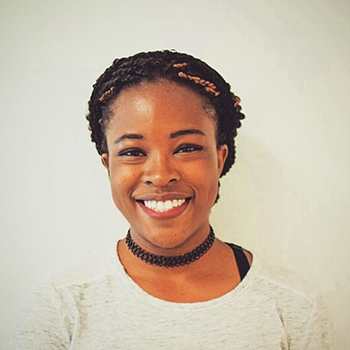Limb regeneration in Axolotl and its clinical applications
Nina Uzoigwe, S.B. ’21, a bioengineering concentrator with a secondary in global health and global health policy at the Harvard A. Paulson School of Engineering and Applied Sciences, is driven to make an impact in medicine.
Since she was young, Uzoigwe has had a passion for biology and bioengineering, marveling at the ability of cells to create lasting effects.
“I remember in eighth grade, my teacher showed us the effects of a sonic hedgehog gene, a specific gene in our genome, during fetal development,” she said. “I was captivated by how miniscule proteins encoded by this gene could create huge cascades and induce normal body patterning. It was this experience that made me realize how powerful these small molecules could be in impacting people’s lives.”
Inspired by that fascination, Uzoigwe recently took part in a clinical fellowship in Italy and Portugal, where she had the opportunity to shadow doctors through their day-to-day interactions.
“Being in that kind of environment, I saw physicians giving diagnoses and treating patients, but ultimately only providing palliative care,” she said. “It made me feel like I wanted to have a more impactful position in a patient’s quality of life.”
Drawing on that experience, Uzoigwe decided to research cell regeneration in the lab of Jessica Whited, Assistant Professor at Harvard Medical School and Principal Faculty at the Harvard Stem Cell Institute.
Various organisms and animals, such as starfish, are known for their regenerative abilities. Humans are included in that group, but it is limited to certain tissues and organs. In fact, according to the Whited Lab, almost 2 million Americans have undergone limb amputation due to injury or disease. With that number expected to increase, there is an urgent need for a solution. The Whited Lab is tackling this problem by studying axolotl salamanders.
In a project titled “Examination of Failed Regeneration via Wound Epidermis Perturbation in Axolotls,” Uzoigwe, with the assistance of Garret Dunlap, a biological and biomedical sciences Ph.D. candidate, is exploring the ability of axolotl salamanders to regrow lost limbs. The salamanders’ limbs are anatomically similar to those of humans. When these salamanders lose a limb, a layer of skin, called the wound epidermis, crawls over the injury site, she explained. Simultaneously, regenerative cells aggregate beneath the injury site to form the blastema, a group of undifferentiated cells that helps to form the internal tissues for the reformation of the limb.
“A lot of studies have shown that the wound epidermis and the blastema are integral [to limb regeneration] because usually the wound epidermis helps guide the blastema in the formation of the limb,” said Uzoigwe. “We are trying to do a permutational study of this foundational information where we are inhibiting the formation of the wound epidermis to see what cells are recruited to the site upon injury.”
A preliminary field of research, Uzoigwe is helping the lab build raw data on the causes of the activation, differentiation, and recruitment of cells in the formation of the blastema to establish whether such research could have future clinical applications.
While she hopes to continue her research during the academic year, Uzoigwe is also excited to work as an EMT with CrimsonEMS and continue to play rugby on the Harvard Women’s Varsity Rugby Team.
